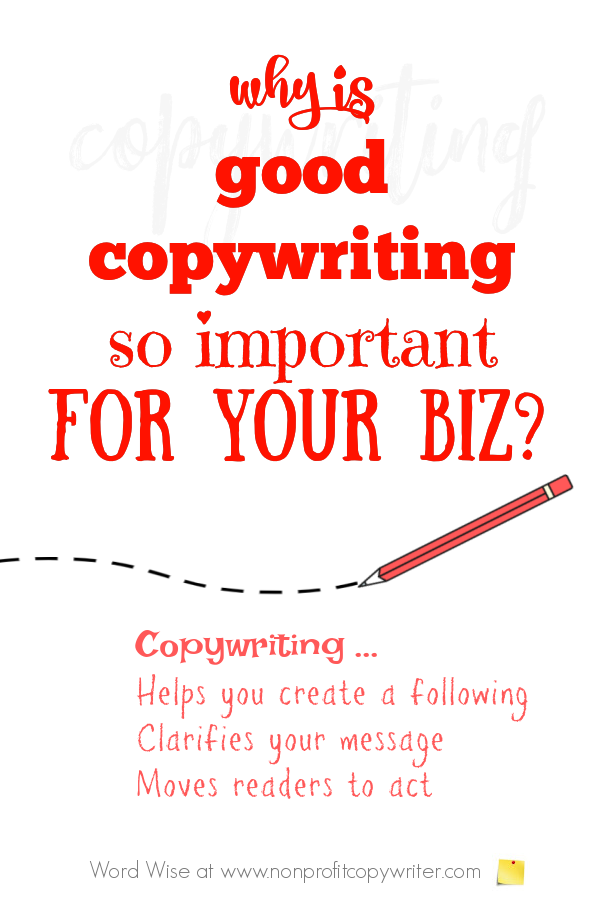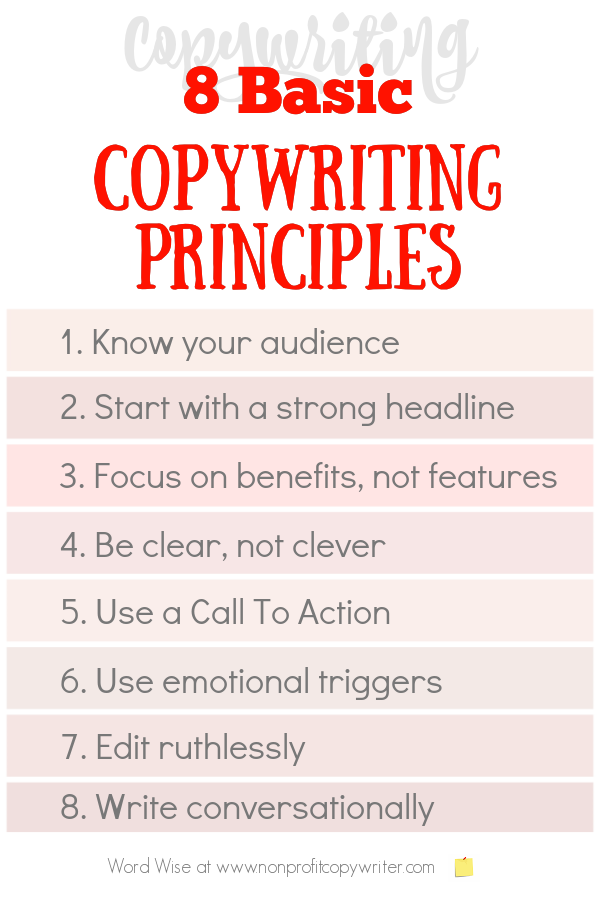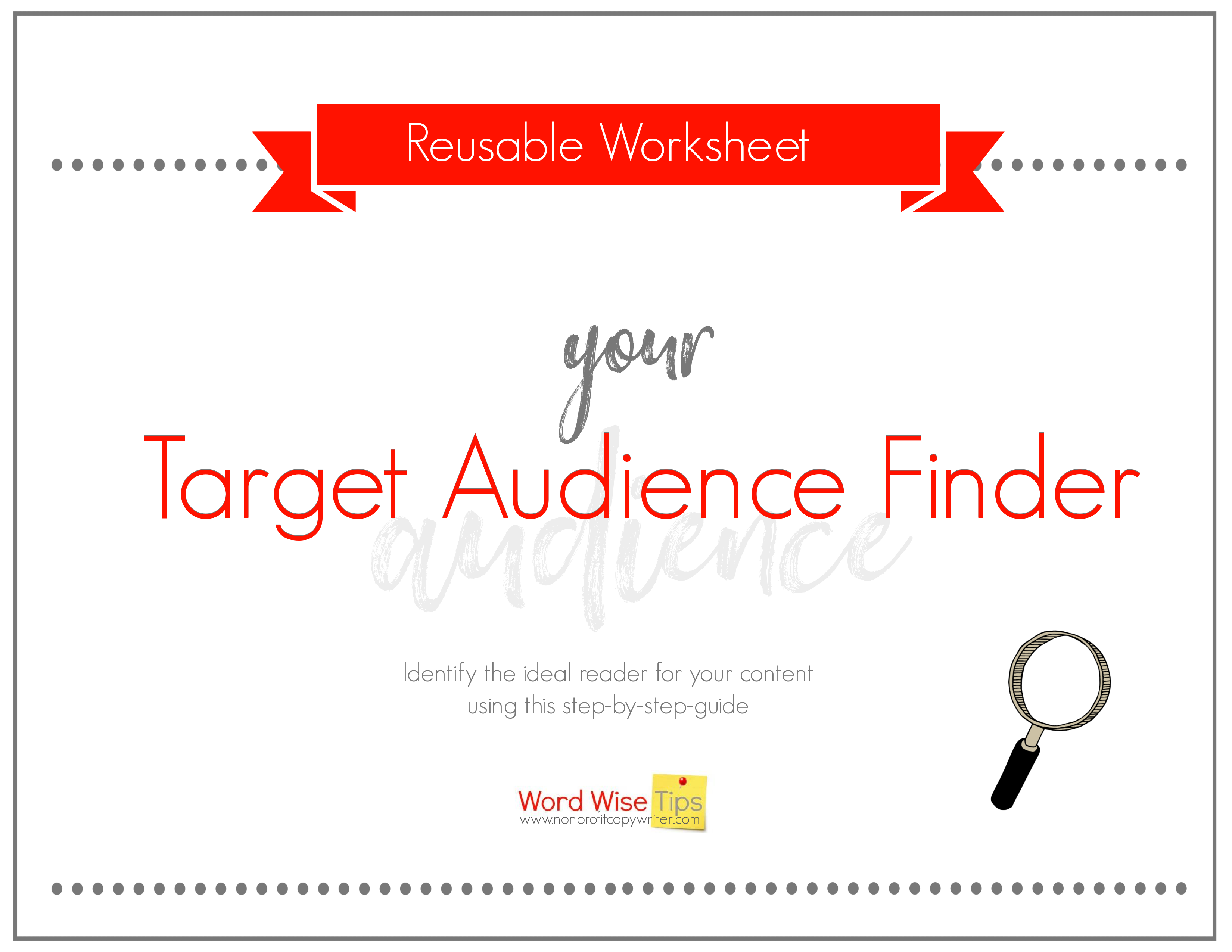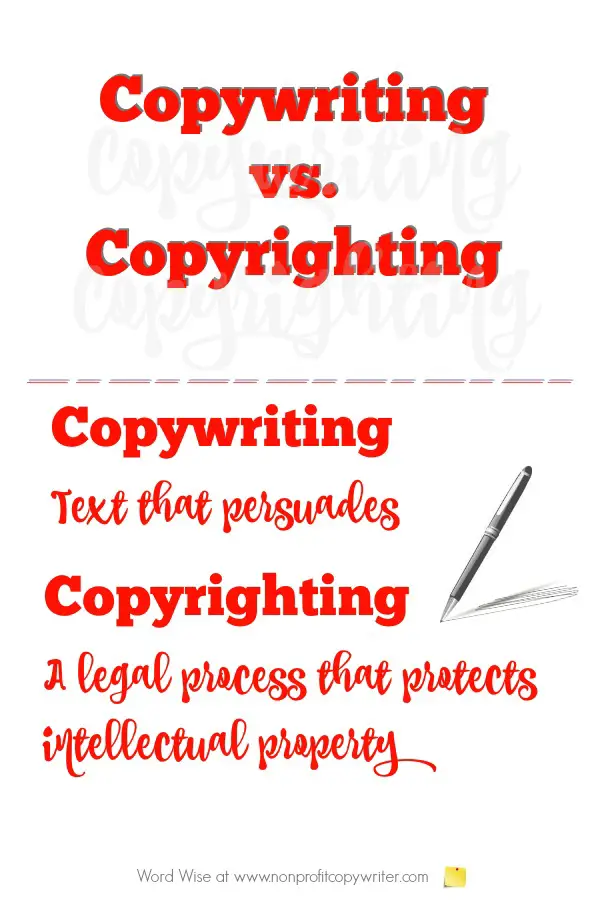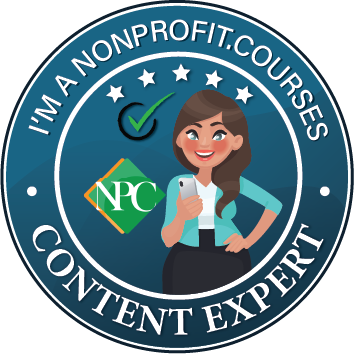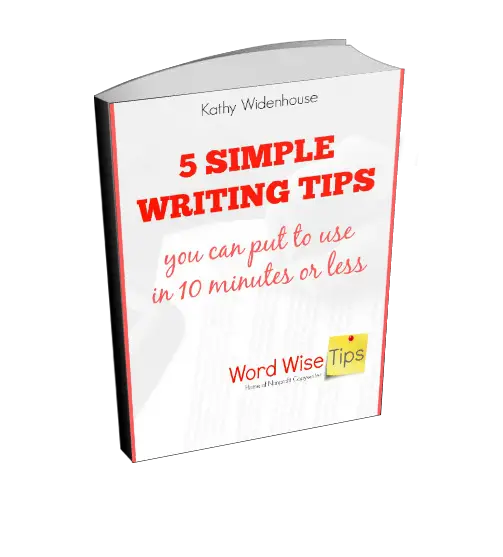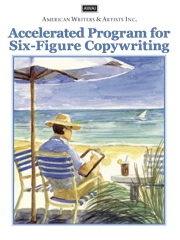Save Time: Get 5 Simple Writing Tips
you can put to use in 10 minutes
Basic Copywriting: What Is It and Why Do You Need It?
Award-winning writer Kathy Widenhouse has helped hundreds of nonprofits and writers produce successful content , with 750K+ views for her writing tutorials. She is the author of 9 books. See more of Kathy’s content here.
Updated 6.17.25
Basic copywriting is text that persuades. It’s the practice of writing text (called copy) with the goal of persuading someone to take a specific action—like buying a product, signing up for a service, or clicking a link.
It’s essential for any business, whether you’re large or small. Copywriters use the written word to promote your cause, service, or product.
But good, basic copywriting doesn’t just “sell.” Anecdotes, verbal pictures, and facts conspire together to tell a story, educate, inspire – and more than anything else – produce an emotional response in the reader.
An emotional response moves the reader to give a gift or buy a product.
Basic copywriting FAQs
Q. Why is good copywriting so important for your
biz?
Today’s not called “The Communication Age” for nothing. Engaging, basic copywriting is foundational to creating a following.
Whether you’re a 1-man operation, a small nonprofit, a mid-sized commercial or faith-based enterprise, or a multi-million international corporation, you must communicate well with your prospects, customers, and donors.
Print materials, online communications, and social media all require solid, persuasive writing.
Q. What kinds of pieces call for a copywriter?
Anything that’s needed to promote your cause or inform your
constituency: appeal letters, taglines, websites, email campaigns, newsletters,
flyers, television, radio, and telephone scripts, press releases, brochures,
postcards, sales letters, social media posts, blogs, devotionals, lyrics, articles,
booklets, lesson plans, job descriptions, case statements, grant applications … read more about the kinds of copywriting projects you'll write and the skills needed for each.
Q. What’s the difference between copywriting and content writing?
Both copywriting and content writing are forms of persuasive writing. Both use storytelling. Both draw on data to back up their claims.
The main difference between copy and content is their purpose. Copywriting is transactional. The point of writing good copy is to get the reader to act – to click, to comment, to buy, to volunteer, to download, to give. It’s not poetry. It’s not journaling. It’s not blogging (though blog posts can include copywriting). It’s strategic writing designed to impact behavior.
Content, on the other hand, is relational. Its purpose is to persuade readers with quality, relevant information to build a long-term relationship with the reader
Q. What are
some basic copywriting principles?
- Know your audience. You must understand who you’re writing for,
what they care about, what problem they want solved, and what kind of language
or tone they respond to. Without this, the copy will fail.
Tip: Copy that tries to reach everyone usually reaches no one. - Start strong. A powerful headline and enticing first line are
critical. If you don’t grab attention in seconds, readers bounce. Your goal?
Make them want to read the next line.
Tip: The headline is your hook—don’t bury it. - Focus on benefits, not features. People don’t buy features—they buy
solutions. For example …
❌ This chair has adjustable lumbar support.
✅ Sit comfortably for hours without back pain.
Tip: Ask, What does this feature do for the reader? - Be clear, not clever. Clever copy might win awards. Clear copy
makes sales. Always favor clarity with simple words, short sentences, and direct
structure.
Tip: If you confuse them, you lose them. - Use a Call to Action (CTA). Tell the reader exactly what to do next. Don’t assume they’ll figure it out—guide
them, like this:
“Buy now”
“Sign up today”
"Get your free guide”
Tip: Without a CTA, your copy has no destination. - Use emotional triggers. People buy based on emotion, then justify
with logic. Good copy taps into emotions like fear, curiosity, desire,
belonging, and urgency. Is that manipulative? I think not. Feelings are part of
the human experience.
Tip: People act based on emotion, then justify with logic. - Edit ruthlessly. While web content may favor long form so that
plenty of keywords attract search engines, great copy is written in
revision. Cut fluff. Trim passive voice. Make every word earn its spot.
Tip: Good copy isn’t written—it’s rewritten. - Write conversationally. Write like you talk, not how you might deliver a lecture or construct a term paper. Use contractions. Ask questions.
Vary sentence length.
Tip: Copy should sound like a one-on-one chat.
Q. What kinds of projects involve
copywriting?
- Website pages (home, about, services)
- Sales pages and landing pages
- Emails and newsletters
- Ads (Google, Facebook, print)
- Brochures and product descriptions
- Direct mail letters
Q. What are key skills I need to
become a copywriter?
You don’t need a college degree to become a copywriter … but you need to cultivate a unique combination of writing, researching, psychology, and marketing abilities to succeed as a copywriter, including:
- Basic writing proficiency: a grasp of grammar, style, storytelling, headline creation, editing
- Persuasive writing techniques: the ability to convince the reader with your words.
- Research: a curious mind that can examine trends, gather content, uncover interesting facts, and analyze it to reach a conclusion
- Editing: the capacity to trim a written draft for clarity.
- SEO: the ability to optimize content for the search engines.
- Insight: the ability look beyond the obvious to understand people and their motivations.
- Familiarity with different writing forms: letters, articles, blog posts, websites, social media posts and when to use each
- Digital skills: the ability to navigate online marketing tools and platforms … or the willingness to learn.
Q. What are the benefits for
becoming a copywriter?
- Plenty of demand. Nearly every business needs copy—websites, emails, ads, landing pages, brochures—which means steady work opportunities. Plus, the income potential is solid. Experienced copywriters can command high rates, especially in niches like direct response, financial writing, or email marketing.
- Flexibility. Many copywriters work remotely, freelance, or part-time. It's a career that offers location and time flexibility.
- Diversity. You can write for nonprofits, tech startups, health companies, authors, or e-commerce businesses—variety keeps the work interesting. And these days most copywriters specialize, which means you can focus on a niche that interests you.
- Tangible results. Your writing can directly impact sales, lead generation, or conversions—which is satisfying and adds value to your portfolio.
- Transferable skills. Copywriting exposes you to marketing, psychology, human behavior, and industry-specific trends. You're always learning something new. Skills in persuasion, storytelling, SEO, and editing translate well into other careers like content strategy, UX writing, or brand consulting.
Identify your project's ideal reader with this step-by-step guide.
Q. Who’s who in the basic copywriting
equation?
Copywriter: the person who puts together the textual content of a piece.
Designer or art director: the person who puts together the visual content (like layout and graphics) of the piece, using the text created by the copywriter.
Prospect or audience: the reader(s) to whom the copy is directed.
Q. Do
businesses know they need copywriting?
Some do. Established companies and digital brands understand the need for text that drives response. Others – a large percentage of mid-size and small businesses, organizations, and nonprofits – undervalue copy. They may think “writing is easy” and try to do it in house. Or they may see the value in good copywriting but think they can’t afford it, so they get stuck in DIY mode.
This is where a freelancer can make a difference – and make a living. Show your prospects how good copy matters by using before/after examples. You can also explain why hiring a freelancer is cost-effective. And you can offer both copywriting services and content writing services that can help them streamline their marketing.
Q. Who does the copywriting for a business or organization?
Large organizations hire in-house copywriters. Small to mid-size ones often outsource copywriting, either by using an advertising agency or by developing relationships with freelancers.
Q. Do small or mid-size organizations really
need a copywriter?
One of the biggest mistakes smaller organizations make is thinking they don’t need help with communications. This mistake can take two forms.
- You think communications aren’t really that necessary.
- You think you can do it all yourself.
Uh, just one question. How many hats do you wear already? You may have gotten an A in your college creative writing class, but as a small business owner or nonprofit leader, do you have the time to create a multi-pronged communications plan, write all the content for each piece, learn how to use today’s ever-changing graphics manipulation programs to build
an engaging layout, obtain bids, post daily on your group’s social media sites, load up new website content each week, send out regular email campaigns, apply for grants and win them …
Didn’t think so.
Q. What’s so unique about nonprofit
copywriting?
Copywriters that specialize in working with nonprofits are equipped with a special magnet that pulls in gifts. (Just kidding.)
In all seriousness, nonprofit copywriters and commercial copywriters use similar persuasive writing techniques. A nonprofit copywriter focuses on the story of changed lives and why that organization’s work is an outstanding investment, thereby persuading readers to provide support. A commercial copywriter focuses on selling a product or service, which persuades readers to buy it.
Q. What’s the difference between “copywriting” and “copyrighting”?
Copywriting is the process of producing persuasive text.
Copyrighting is a legal process in which you protect something you have created – a book, article, piece of art, or logo, for instance. For more information on copyrighting your creation, consult the good people at the U.S. Copyright Office.
More on Basic Copywriting
Use This Simple Features vs Benefits Exercise to Avoid Deadly Boredom ...
How to Write Better Bullet Points ...
Copywriting - what is copywriting?
Copywriting vs Content Writing: What's the Difference?
The Writing Process: The Key to Writing Faster and Better ...
Pre-writing: 4 easy steps to make your writing go faster ...
Writer's Block? 3 tips for starting your writing project ...
Target Audience: You’ve Got More Than One. Here’s How to ID Them ...
Graphics and Copywriting Basics: A Simple Tutorial ...
Basic copywriting: Does your headline do its job?
Basic copywriting: is it a feature or benefit?
Point of view (POV) explained for copywriters and content writers ...
Basic copywriting: know your audience before you write ...
Basic copywriting rule: how to make the "You Rule" work for you ...
Readability check: an easy way to make your writing cleaner ...
Newbie copywriting FAQs (Frequently Asked Questions) ...
Kinds of writing projects copywriters do ...
A newbie copywriting website glossary, part 1: internet acronyms ...
A newbie copywriting website glossary, part 2: ten basic terms ...
Newbie copywriting: 3 appeal letter copywriting formulas ...
More Basic Copywriting Tips on our Pinterest board ...
Other nonprofit copywriting tools
The Christian Writers Market Guide: do you need it?
Donor acknowledgement: a fancy way of saying "thank you" ...
Using anecdotes: how to capture readers with a slice of life ...
Return from Basic Copywriting to Nonprofit Copywriter home
As an Amazon Associate I earn from qualifying purchases.
Share This Page

Named to 2022 Writer's Digest list
BEST GENRE/NICHE WRITING WEBSITE

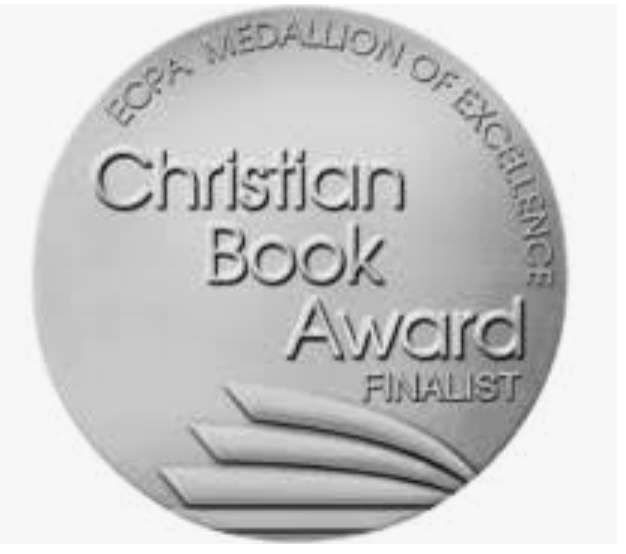
Stop Wasting Time!
Grab your exclusive FREE guide, "5 Simple Writing Tips You Can Put to Use in 10 Minutes or Less"



BASIC COPYWRITING
Learn from the masters in the acclaimed course, Six-Figure Copywriting. If you can write a simple letter to a friend, you can write promotions that pull and make a living working for yourself as a copywriter. Learn more.


